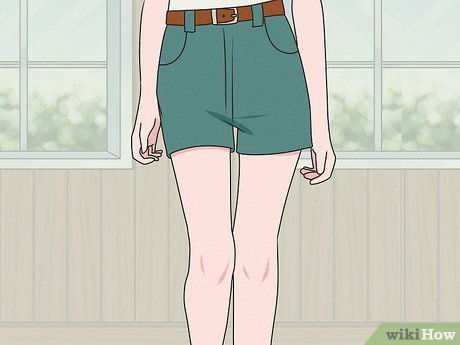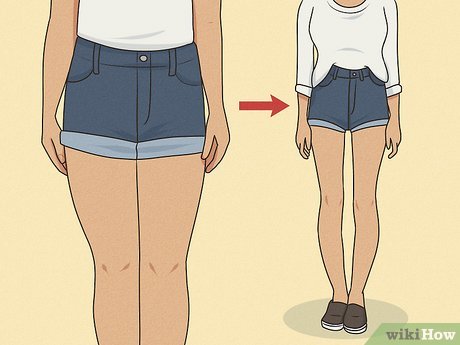
For years, the “thigh gap” has been considered as a marker of beauty and thinness. Social media trends, glossy magazines, and even fashion runways have showed it as an ultimate fitness goal. But the real question is: does having or not having a thigh gap actually say anything about your diet? The answer is more complex than many people think.
1. Genetics Overrules Diet
The first and most important truth: the thigh gap is largely impacted by bone structure and genetics, not by what you eat. People with wider-set hips are naturally more likely to have space between their thighs, while those with narrower hips may not, regardless of weight or body fat percentage. This means that even someone with an extremely strict diet and low body fat may never achieve a thigh gap.
So, before judging your consuming habits based on this feature, remember that it is not a universal sign of health or discipline.
2. The Role of Diet in Body Composition

While bone structure sets the foundation, your diet can influence body composition. A balanced diet high in whole foods, lean proteins, healthy fats, and fiber can help reduce excess fat and encourage muscle definition. In some cases, a very low body fat percentage might make a thigh gap more visible but this comes with risks if achieved through extreme dieting.
Crash diets or severe calorie restriction can backfire, leading to nutrient deficiencies, muscle loss, and long-term damage to metabolism. The thigh gap should never be the primary goal of dietary choices.
3. Misconceptions About “Clean Eating” and Thigh Gaps
Many believe that “eating clean” or avoiding carbs will magically create a thigh gap. The truth is:
- Cutting carbs completely doesn’t guarantee thigh separation.
- Consuming salads all day won’t alter your hip structure.
- Restricting certain foods excessively can lead to disordered eating.
- What matters most is overall health, not chasing a body feature that may not be biologically possible for you.
4. The Dangers of Dieting for a Thigh Gap
When young women and men pursue a thigh gap through unhealthy dieting, they may fall into:
- Eating disorders such as anorexia or bulimia.
- Nutritional deficiencies affecting skin, hair, and energy levels.
- Hormonal imbalances that can disrupt menstrual cycles and bone health.
Instead of aiming for a thigh gap, center on building a diet that encourages strength, energy, and long-term wellness.
5. What Your Diet Really Says About You

Forget about thigh gaps for a moment, your diet actually speaks volumes about your relationship with food and health:
- A balanced, flexible diet shows self-care and respect for your body.
- Extreme restrictions may share about pressure from unrealistic beauty standards.
- A joyful, mindful approach to consuming reflects confidence and acceptance.
In short, the thigh gap says little about your diet but your overall health, energy levels, and mindset say everything.
Conclusion: Redefining Beauty Beyond the Gap
The thigh gap is not a measurement of dietary discipline, nor is it proof of health or attractiveness. It’s simply a physical feature that some people have and others don’t. What truly matters is how you fuel your body, how strong and energized you feel, and how you treat yourself.
So, instead of asking “Does my diet give me a thigh gap?” ask:
- “Does my diet give me energy?”
- “Does it keep me healthy and strong?”
- “Does it help me live a life I enjoy?”
Because in the end, a balanced plate is far more beautiful than any gap between your thighs.















